WESTAF mobilizes experts
and defines creative vitality
Through convening thought leaders and conducting field research, WESTAF addresses topics and trends, applying its learnings in the field to create better places to live, work and play.
WESTAF held its first symposium in 1997, and has sponsored a symposium nearly every year since. The first 12 symposia were initially published in paper form in traditional academic style. In an effort to expand the audience for the proceedings, some of the more recent symposia proceedings have been captured only on video or presented in the form of a series of blog posts.
The Summit brought together thought leaders and creative economy experts to discuss opportunities and challenges for creative workers and entrepreneurs, as well as building a more community-centered creative economy.
Convened in Honolulu, Hawai’i in 2017 in collaboration with Forecast Public Art and the Hawai’i State Foundation on the Culture and the Arts, this symposium provided a significant platform for high-level discourse to explore existing challenges alongside emerging strategies for the successful growth of the public art field.
Convened in Denver in 2016, this gathering of arts and policy experts focused on the subject of the status and future of state art advocacy.
This symposium was co-hosted by the California Arts Council and Frank Gehry Partners and convened in Los Angeles in 2014.
Convened in Aspen in 2009, this symposium’s topics included: Developing a new generation of arguments in support of public arts funding and rethinking the structure and scope of state arts agencies, and more!
Convened in Seattle in 2008 and sponsored by the Washington State Arts Commission, this symposium featured discussions about the history and formation of cultural tax districts. It focused on the benefits, drawbacks, structure, and impact of cultural tax districts.
Convened in San Diego in 2008, symposium participants discussed how creative sectors have been considered in state economic development efforts as well as how they factor into economic policy.
Convened in Denver in 2007, this symposium discussed global migration, cultural democracy, and diversity.
This symposium was a follow-up gathering to the previous year’s symposium, Cultural Identity in the West. Convened in Boulder in 2005, the forum focused on emerging young leaders from culturally diverse communities in the West.
Convened in Little Tokyo, Los Angeles in 2004, Cultural Identity in the West grew out of the conversations and discussions of WESTAF’s Multicultural Advisory Committee.
Convened in Denver in 2003, this symposium explored a wide variety of approaches to address current and future issues in the area of state arts agency structure and process.
Convened at the Aspen Institute in 2002, this symposium brought together 22 prominent artists, scientists, writers, and spiritual leaders working to establish a nexus between artistic, scientific, and spiritual thought.
In 2000, WESTAF convened a second symposium at the Aspen Institute, Cultural Policy in the West II. Experts in the fields of technology, youth culture, demographics, and politics shared their perspectives on important trends and discussed the relationship of these areas to the culture sector.
Convened at the Aspen Institute in 1999, participants in this symposium discussed the nature of cultural policy in the West and features of the region’s policy environment that influence and shape cultural policy in the region.
Convened in Seattle in 1997, The Visual Artist and the New Funding Environment symposium was designed to be a proactive step toward the redevelopment and expansion of opportunities for individual visual artists across the country.
Convened in San Francisco in 1997, this symposium focused on the environment for and dynamics of literature in the West. This was the first WESTAF symposium.
General Research
This report contains findings from a survey of arts organizations and arts administrators on the behaviors, protocols, preferences, and perceptions of communication and information use and management.
The Statewide Arts Education Assessment (SAEA) was designed by practitioners in the field of arts education in collaboration with WESTAF in response to a call for a more comprehensive snapshot of the status of K-12 arts education in individual states.
WESTAF commissioned and completed an in-depth study of music in Denver as part of a report it prepared for the Denver Office of Cultural Affairs to assess the economic vitality of Denver’s music community.
The Hawai‘i State Foundation on Culture and the Arts commissioned this study to document the effectiveness of the support it has distributed to Hawai’i’s artists and nonprofit arts organizations.
For much of U.S. history, non-Native scholars have been the principal interpreters of Native life and lifeways. This report presents a series of case studies of Native interpreters reclaiming their own voices concerning cultural representations.
Advocacy
Research for An Arts Advocacy Analysis in the WESTAF Region was gathered to inform attendees of the WESTAF Executive Director Forum that took place on May 30-31, 2002 in Portland, Oregon.
This report examines the organizational standards and effectiveness of arts advocacy organizations nationwide and offers models of best practices that have succeeded.
Cultural Policy
This report examines the Portland art tax that was passed, overwhelmingly, by voters in 2012 and offers ways Portland may be used as a model for other communities.
Commissioned for WESTAF’s Seminar on Cultural Taxing Districts, A History of the SCFD is the history of the Science and Cultural Facilities District (SCFD) in a seven-county area around Denver.
A commissioned paper for WESTAF’s Seminar on Cultural Taxing Districts, Reflections describes the experiences of Jane Hansberry, the former executive director of the Science and Cultural Facilities District in Denver, Colorado.
The authors of this WESTAF-sponsored research paper examine marketing trends and principles in entertainment and performance.
The purpose of this report is to assist those who are engaged in discussions regarding the investment of cultural trust funds.
This briefing paper, prepared for the Nevada Arts Council, offers case studies of state arts agencies that have developed cultural trusts.
Prepared for the Idaho Commission on the Arts, this report examines the impact of alternative funding methods for state arts agencies.
This report was prepared for the Oregon Governor’s Task Force on Cultural Development on some of the key collaborations that have occurred in the cultural community, and to relate both the positive and negative outcomes of those cooperative efforts.
This report examines the opportunities and challenges for the cultural programs featured in Olympic games.
Research for Prepared for the Montana Arts Council, this report provides arguments for public support of the arts.
This report examines the impact of Alaska’s investment in the arts and culture on the financial health of the state.
Economic Impact Reports
The WESTAF-generated series of reports related to economic impact and reports of descriptive statistics related to the creative economy were largely replaced in 2004 by the Creative Vitality Suite™ online tool, formerly known as Creative Vitality Index. Because this tool placed the power of creating reports in the hands of the end-users, WESTAF, with a few exceptions, does not hold copies of these reports. Thus WESTAF’s work in this area is more robust than ever, though, the reports emanating from the use of the Creative Vitality Suite™ online tool are largely not known to WESTAF and not placed on this list.
Developed primarily for policy audiences, Creative Economies and Economic Recovery highlights how the arts can be part of comprehensive economic development strategy in the wake of the COVID-19 crisis.
Great things are happening in Philadelphia! Over the past five years – and despite recent economic challenges – the health of Philadelphia’s creative sector remains 50%
stronger than that of the nation.
In 2005 we teamed with WESTAF and
the Seattle Office of Arts and Cultural Affairs to establish the Creative Vitality Index (CVI) to help us to understand the context of artistic and creative enterprises, educate the community at large about the creative economy, and inform public policy decision-making about trends and related issues.
Economists increasingly believe that economic clusters are the primary engines of growth, and are thus frequently informing economic policy decisions at the state and local levels. This paper posits three frameworks for cultural economic clusters and summarizes case studies of five clusters that include cultural activity.
In the spring of 2000, the Nebraska Arts Council commissioned WESTAF to conduct an economic impact study of the arts industry in Nebraska.
In the summer of 2000, the Oregon Arts Commission, Northwest Business for Culture and the Arts, and the Regional Arts and Culture Council commissioned WESTAF to conduct an economic impact study of the nonprofit arts sector in Oregon.
In the fall of 1999, Utah’s Arts and Humanities Council, Office of Museum Services, Department of Community and Economic Development, State Historical Society, Salt Lake City Arts Council, and Cultural Alliance commissioned WESTAF to conduct an economic impact study of the cultural sector in Utah.
In February 2000, United Arts of Wake County commissioned WESTAF to conduct an economic impact study of the culture industry in Wake County.
Oregon is home to a vibrant arts industry that makes a meaningful contribution to the state’s economy. This study documents the breadth and depth of that industry and also identifies a number of indirect ways that the arts industry strengthens Oregon’s economy.
An arts economic impact study is a resource that can be marshaled to serve many purposes. Principal among those is the reorientation of the thinking of political, business, and community leader’s regarding the role of the arts in the economy.
Although WESTAF published and sold books early in its history, it has not done so for some time. Nevertheless, the published books prepared by WESTAF were widely used and the information in many of them remains useful.
WESTAF commissioned argumentation expert Robert Trapp to consider ways that arguments for the support of folk arts could be made more effectively.
On Board is written for the broad not-for-profit field, not just for arts organizations. Guiding principles described here have equal applicability to virtually all not-for-profit organizations irrespective of their particular field or discipline.
This handbook is designed for specific use by performing arts presenters and touring companies.
Published in 1989, this comprehensive guidebook is a valuable resource for anyone involved in the planning and design of theaters, symphony halls, dance studios, museums, art galleries, convention centers, school auditoriums and other facilities.
WESTAF published this book in 1989 to recognize and encourage significant recent development in the fields of crafts and architecture.




